Chest trauma.
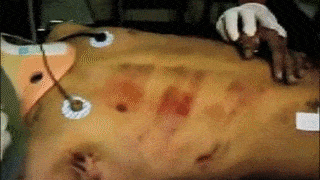
With a flail chest the area of fractured ribs is paradoxically sucked in when you breathe in rather than expanding the chest.
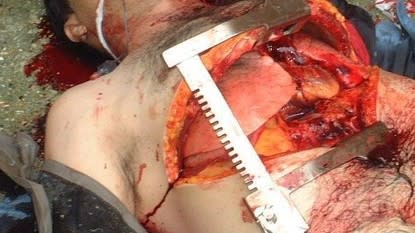
You are relying on being able to relieve a tamponade from a single stab. Ideally when the patient is agonal or very soon after a cardiac arrest.
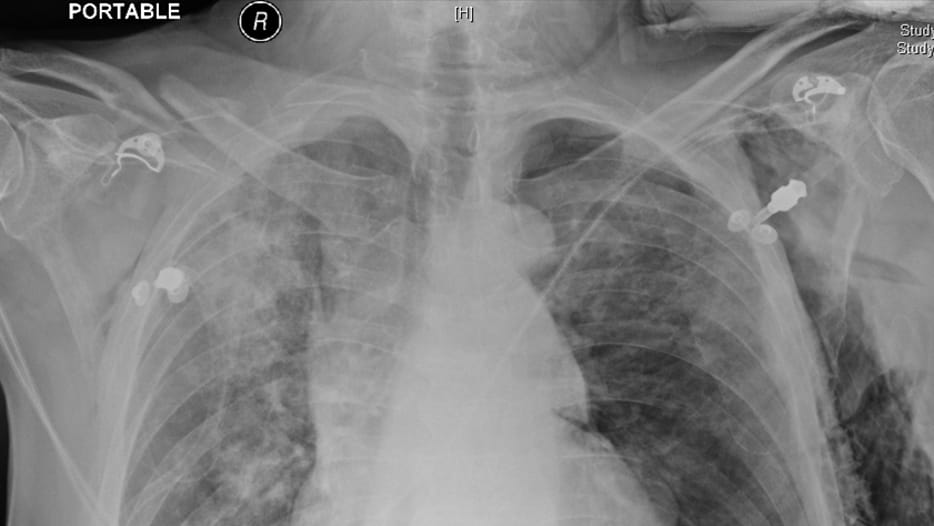
If you use a 3cm needle half the time you will not enter the pleura. Previously the second interspace in the mid clavicular line was recommended but most guidelines have now changed. Pre hospital doctors tend to use a finger thoracostomy which creates an open pneumothorax.
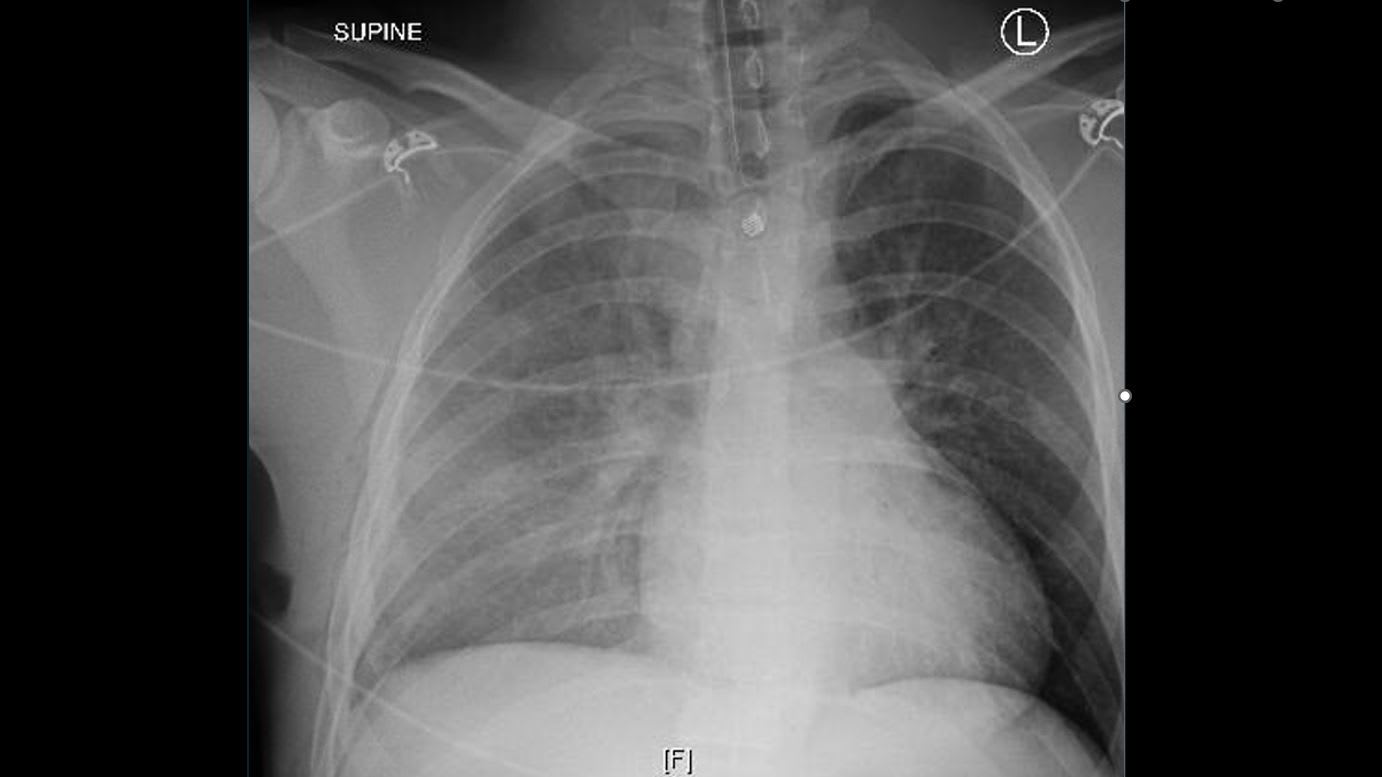
The CXR is a supine film. The blood therefore does not layer out like you would see in an upright film but itstead "veils" the hemithorax.
He swam down in quite shallow water behind a stingray. The stingray propped and slashed the front of his chest with it's tail barb multiple times. Steve ended up bleeding out from his right ventricle from an open wound.
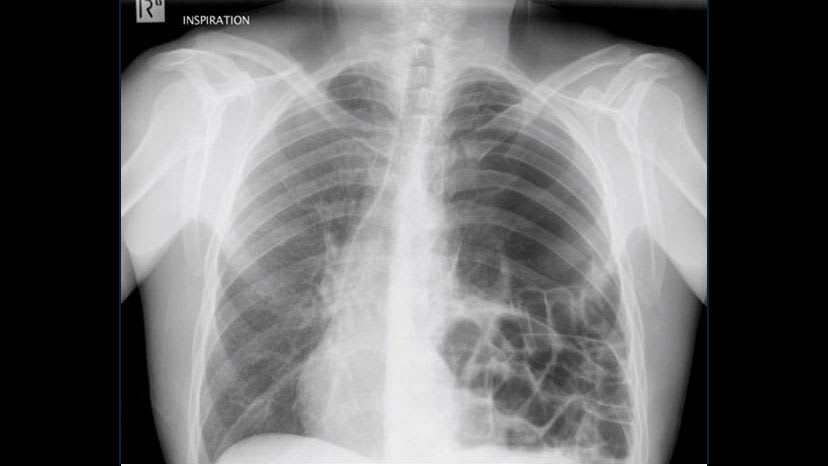
The ruptured diaphragum neans bowel is trapped in the left hemithorax and resulting in compression of the heart. A surgical emergency.

Chest tubes have been malpositioned in many different spots. Examples: Not in the pleural space. Into the abdomen. Into the lung. Into the heart. Very often they are placed too low---below the "triangle of safety".
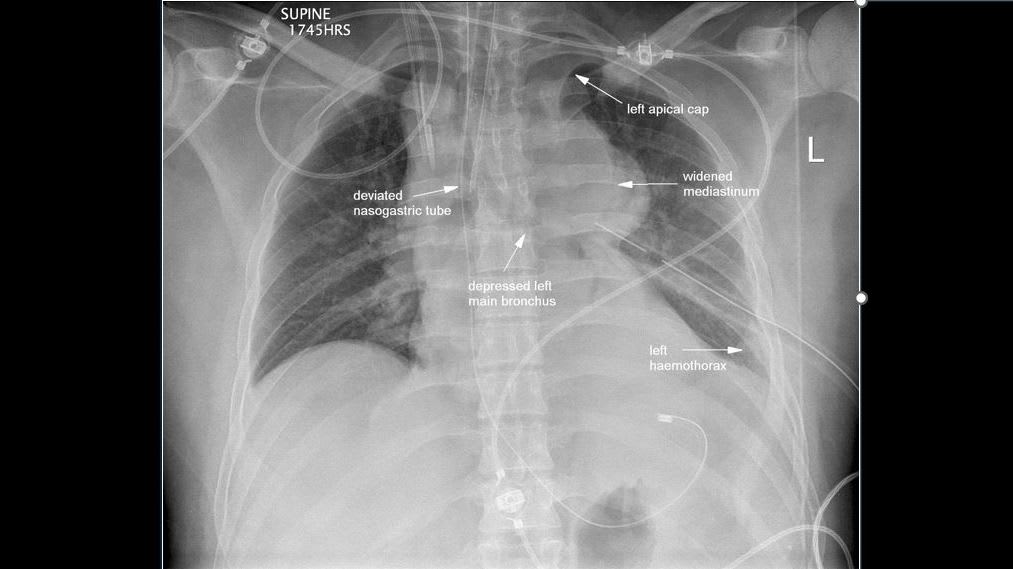
There are things you can look at on the CXR like widening of the medistinum and blurring of the aortic knob but they are not very sensitive or specific.
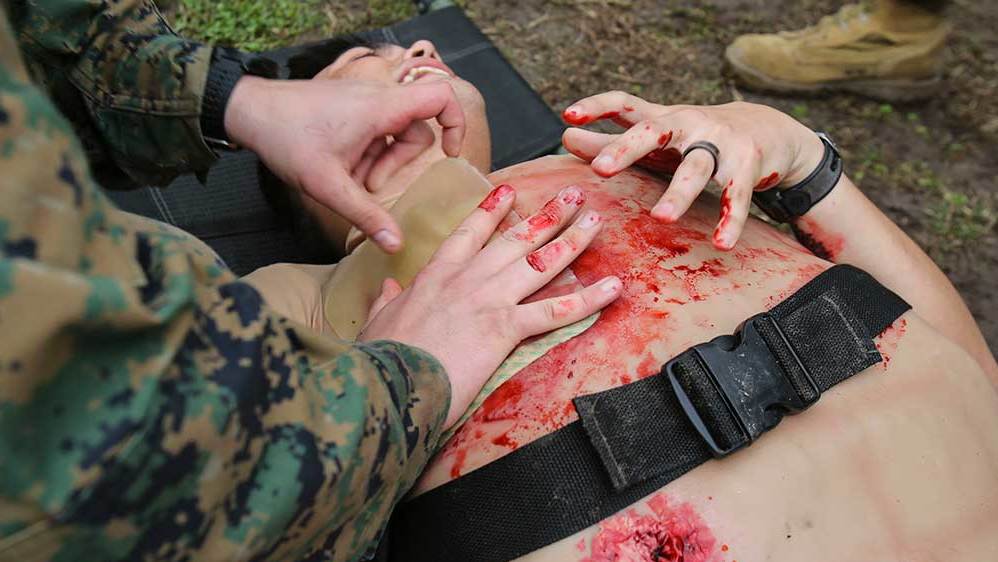
The problem you often find is that using the tape we have in ED to tape 3 sides is difficult because the area is wet and bloody. Dedicated dressings use by the military are much more effective.
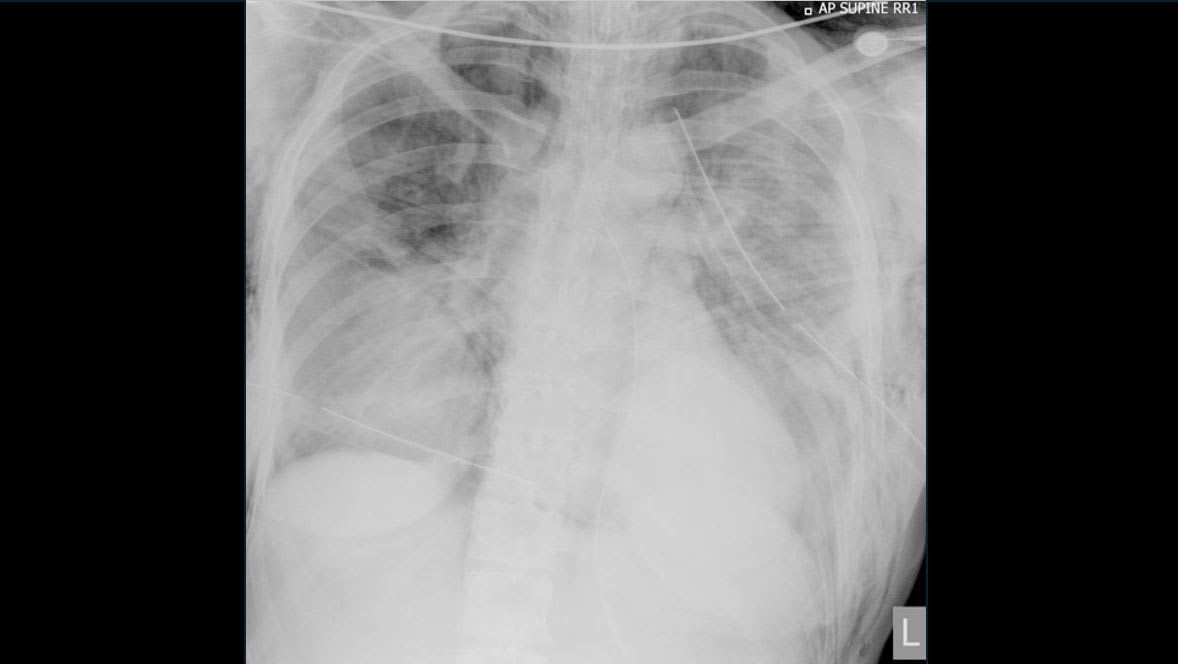
They were crushed by the trunk against a bollard. The zoo keeper lost output probably due to bilateral tension pneumothoraces. These were relieved and surprisingly the lady did well. Zookeepers are killed by elephants almost every year.